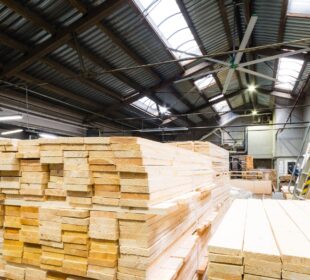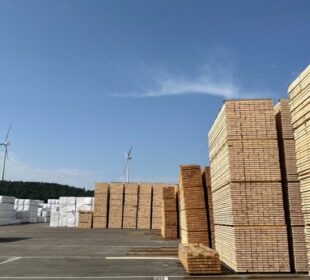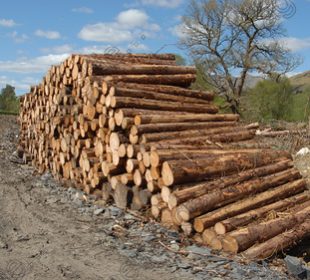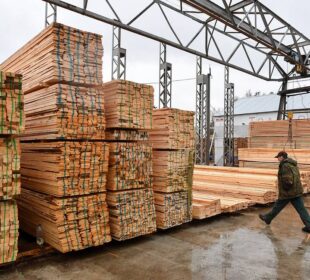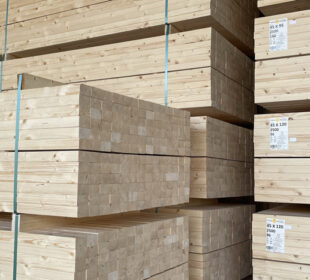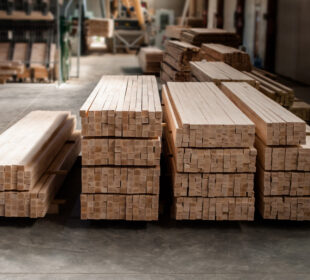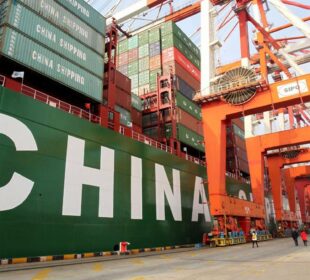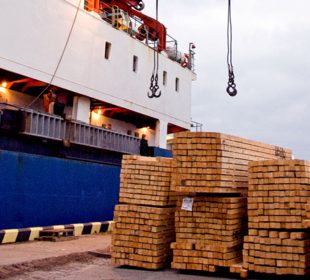Global softwood lumber trade increased 12 percent year-over-year to reach a new record high of 121 million m3 in 2016.
Since the global financial recession in 2009, there has been a steady climb in international trade of lumber, with shipments the past seven years having increased as much as 66 percent, as reported by Wood Resources International.
While it is no surprise that China is a major driver for the dramatic rise in lumber shipments worldwide the past seven years, it is interesting to note that the US has actually increased softwood lumber imports more than China.
Lumber markets – North America
Lumber exports from British Columbia reached their highest levels since 2006 in 2016. Lumber shipments from the province to the US were up 25% year-over-year, while export volumes to Asia have fallen about eight percent. Shipments to China were up in the 4Q/16 after having reached a six-year low in the 3Q/16. Export volumes to the US in December 2016 accounted for 63% of BC exports, up from 55% two years ago.
Lumber markets – Northern Europe
Lumber prices in the Nordic countries have been at historically low levels during most of 2015 and 2016. Although prices increased in both Finland and Sweden during the spring and summer of 2016, this upward trend was short-lived and prices fell during the fall, and in the 4Q/16, were back down to about the same level as in the 4Q/15.
During the first ten months of 2016, Finland increased lumber exports by ten percent as compared to the same period in 2015 and the country is on pace to reach a record high in 2016. It is interesting to note that the three biggest export markets for Finnish sawmills are all outside Europe; Egypt, Japan and China.
Lumber markets – China
China imported record high volumes of softwood lumber in 2016. Despite relatively pessimistic forecasts for wood demand early in 2016, China’s need for imported wood picked up during the summer and fall with import volumes in the 4Q/16 being up about 20 percent as compared to the 4Q/15, according to the Wood Resource Quarterly (WRQ).
Import values for lumber to China rose during most of 2016 with average prices in December 2016 being about six percent higher than in December 2015. The increases during 2016 came after two years of sharply declining prices.
Lumber market – Japan
Japanese softwood lumber imports in 2016 were the highest they have been in three years as total wood demand in the country picked up 3.6% from 2015. There has been a slow but steady shift in the sourcing of lumber away from North America to Europe and Eastern Russia the past few years.
From 2015 to 2016, the North American market share fell from 39% to 35%, while the market share of lumber from Russia and the Nordic countries increased from 39% to 42% year-over-year. Both domestic and import prices (in US dollar terms) have fallen in Japan during the second half of 2016, mostly because of a weaker Yen.
Lumber market – Russia
The weak Ruble continued to be a boon for Russian lumber exporters during 2016, with shipments jumping over ten percent from 2015. During the past three years, export volumes have increased 26% with China being the destination for more than half of the shipments from Russia.
China and Japan were the shining lights for Russian lumber exporters in 2016 as they were the only two markets of the top ten markets that imported more lumber in 2016 than in 2015.


